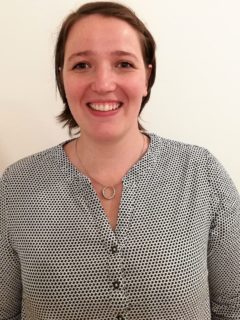Vera Vierheilig
Vera Vierheilig
Bachelor Student
Bioactive glass-based scaffolds for bone tissue regeneration
Betreuer: Marcela Arango-Ospina, Prof. Dr.-Ing. habil. Aldo Boccaccini
Since the discovery of 45S5 by L. Hench [1], bioactive glasses have been considered attractive materials for bone regeneration. Their main advantage is the strong interaction with bone tissue. As soon as bioactive glasses get in contact with body fluids, they begin to dissolve and release ions, for example, calcium or phosphate. This enables the targeted release of ions over a longer period, while the material dissolves and the affected area is replaced by natural bone. This restores the natural tissue function more effectively [2]. Depending on which specific properties are desired, different compositions of bioactive glasses are used and metallic therapeutic ions can also be incorporated [3], e.g. silver ions that have a bactericidal effect. In this project, the space holder technique will be used as an alternative to the foam replica technique with the aim to obtain mechanically improved scaffolds with high porosity. Evaluation of the mechanical properties, degradation, and bioactivity in simulated body fluid will be carried out.
[1] Hench, L. L., Splinter, R. J., Allen, W. C. and Greenlee, T. K. (1971), Bonding mechanisms at the interface of ceramic prosthetic materials. J. Biomed. Mater. Res., 5: 117-141.
[2] Brauer, D. S. (2015), Bioactive Glasses – Structure and Properties. Angew. Chem. Int. Ed., 54: 4160-4181.
[3] Hoppe, A., Güldal, N. S., Boccaccini, A. R. (2011), A review of the biological response to ionic dissolution products from bioactive glasses and glass-ceramics. Biomaterials, 32 (11): 2757-2774. ISSN 0142-9612

